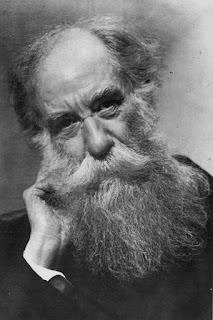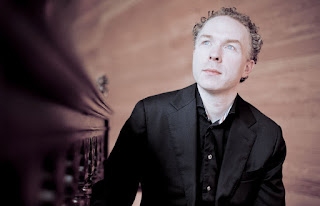Information
Composer: Charles Koechlin
Ralph van Raat, piano
Date: 2010
Label: Naxos
http://www.naxos.com/catalogue/item.asp?item_code=8.572473
- Les heures persanes, Op. 65: No. 1. Sieste, avant le départ: Lent
- Les heures persanes, Op. 65: No. 2. La caravane (rêve, pendant la sieste): Pas vite
- Les heures persanes, Op. 65: No. 3. L'escalade obscure: Adagio (non troppo)
- Les heures persanes, Op. 65: No. 4. Matin frais, dans la haute vallée: Pas trop lent
- Les heures persanes, Op. 65: No. 5. En vue de la ville: Moderato
- Les heures persanes, Op. 65: No. 6. A travers les rues: Allegro vivo
- Les heures persanes, Op. 65: No. 7. Chant du soir: Très calme
- Les heures persanes, Op. 65: No. 8. Clair de lune sur les terrasses: Andante moderato
- Les heures persanes, Op. 65: No. 9. Aubade: Moderato
- Les heures persanes, Op. 65: No. 10. Roses au soleil de midi: Presque adagio
- Les heures persanes, Op. 65: No. 11. A l'ombre, près de la fontaine de marbre: Moderato
- Les heures persanes, Op. 65: No. 12. Arabesques: Allegro (non troppo)
- Les heures persanes, Op. 65: No. 13. Les collines au coucher du soleil: Très calme
- Les heures persanes, Op. 65: No. 14. Le conteur: Assez lent - Le pêcheur et le genni - Le palais enchanté - Danse d’adolescents - Clair de lune sur les jardins
- Les heures persanes, Op. 65: No. 15. La paix du soir, au cimetière: Assez lent
- Les heures persanes, Op. 65: No. 16. Derviches dans la nuit - Clair de lune sur la place déserte
Ralph van Raat, piano
Date: 2010
Label: Naxos
http://www.naxos.com/catalogue/item.asp?item_code=8.572473
----------------------------------------------------------------------------
Review
Neither composer Charles Koechlin nor his masterpiece, translated as The Persian Hours, is nearly as well known or popular as Granados’s Goyescas or Albéniz’s Iberia, let alone the music of Debussy, so they have fallen into the category of musical oddities. (Other recordings include Kathryn Stott on Chandos 9974 and Michael Korstick on Hänssler 93246, also an orchestral version by Heinz Holliger and the Stuttgart Radio Orchestra on Hänssler 93125.) Part of the problem is that nearly all of the pieces in the suite are slow-moving, meaning that the pianist (or conductor in an orchestral version) needs to sustain not only the proper mood but also a semblance of forward momentum.
Enter pianist Ralph van Raat to the rescue. His recording of the suite, albeit slow-moving (slower, in fact, than Holliger’s orchestral recording), has such tremendous atmosphere and a sense of presence that one is seduced into Koechlin’s world and his own interpretation within the first three minutes of the recording.
Koechlin’s view of Persia (now Iran) was based on astronomical observations and a travelogue of the time rather than a first-hand trip to the area. Thus he captured a personal impression of Middle Eastern life, particularly nightlife when the stars were out and the world was still. Harmonically, he was at least as advanced as late-period Debussy, if not actually further along. Although most of these pieces tend toward a harmonically identifiable key, they skew away from it constantly; by the middle of each piece, the unobservant listener will be completely lost in regards to a harmonic base or balance. Some of them have an ostinato bass in one key, but the overlying music is in another. Indeed, it is this constant leaning away from any tonality—and the fact that the music sometimes leans in both directions at once—that gives it its unique flavor. Koechlin somehow manages to set up what sounds like a safe base but gently yet constantly pushes us away from it.
Raat’s performance, as already mentioned, is both musical and fascinating in the extreme. I do, however, question the very long pauses between each piece in the suite. After about the first 10 numbers, you’re not quite sure if each succeeding piece is the last one or not, but that’s probably a post-production decision. If you love this kind of music, this is a CD you simply cannot live without.
-- Lynn René Bayley, FANFARE
More reviews:
http://www.gramophone.co.uk/review/koechlin-les-heures-persanes-op-65
http://www.classical-music.com/review/koechlin-les-heures
http://www.musicweb-international.com/classrev/2012/July12/Koechlin_Heures_8572473.htm
http://www.allmusic.com/album/charles-koechlin-les-heures-persanes-mw0002278545
https://www.amazon.com/Koechlin-Persanes-Ralph-Van-Raat/dp/B006BBVLN2
----------------------------------------------------------------------------
Charles Koechlin (27 November 1867 – 31 December 1950) was a French composer, teacher and writer on music. He was a political radical all his life and a passionate enthusiast for such diverse things as medieval music, The Jungle Book of Rudyard Kipling, Johann Sebastian Bach, film stars (especially Lilian Harvey and Ginger Rogers), traveling, stereoscopic photography and socialism. Koechlin was enormously prolific. Despite his lack of worldly success, Koechlin was apparently a loved and venerated figure in French music.
***
Ralph van Raat (born 1978) is a Dutch classical pianist. He studied music at the Conservatory of Amsterdam and musicology at the University of Amsterdam. Van Raat then studied with Claude Helffer, Ursula Oppens, Liisa Pohjola and Pierre-Laurent Aimard. Van Raat has performed as a recitalist and soloist in Europe and around the world, and has a special interest in contemporary classical music. He has recorded a number of CDs as an exclusive artist for the Naxos label.
----------------------------------------------------------------------------
FLAC, tracks
Links in comment
Enjoy!



MEGA
ReplyDeletehttp://adf.ly/1f9ooE
Thanks a lot for all these great recordings by Koechlin, Ronald!
ReplyDeleteRonald has made two alternatives available of "Les heures persanes", this one, and one by Michael Korstick. Since I don't see a review for the latter, I'd like to briefly comment after listening to both. They are almost like polar opposites. Korstick playes "Les heures" as a piece of impressionistic music, with great sensitivity and sensuality and awareness of tone color, but still clearly, as if it were from Debussy. In contrast, van Raat plays them structurally oriented and rhythmical, constantly propelling them forward. In his interpretation, they are in a line from Stravinsky to Boulez and contemporary music. Comparing the two to more famous pianists, it seems to me that Korstick plays more like Benedetti Michelangeli and van Raat more like Pollini. Anyways, these are my two cents. These recordings will respond well to different preferences and tastes.